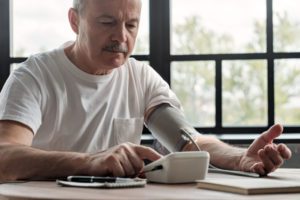Post-operative care refers to the care a patient receives following a surgical procedure. A patient’s needs after an operation can differ for various reasons, including the type of surgery, complications during surgery, as well as the patient’s health history. Regardless of needs, however, most post-operative care typically involves pain management and wound care. A standard global practice, post-operative care has seen recent improvements through remote patient management. While managing patients remotely does not necessarily change their post-op needs, it does prove to significantly elevate the experience by providing increased efficiency and ease of treatment.
Common Obstacles of Traditional Post-Operative Care
Traditional post-operative care has proved to be an effective tool for the management of patients following major surgeries and operations. That said, post-op care is not without its shortcomings. Patient handovers, defined as the transfer of information and responsibility of a patient between individuals or teams, is a particular area that is prone to higher levels of patient risk following a procedure.
Additionally, most patients see a significant decline in their levels of monitoring upon discharge when compared to levels in a surgical ward. This was found to be the cause of thousands of cases of compromised patient care due to a delay in detection of, or completely undetected, underlying symptoms.
Improving Post-Operative Care Through Remote Patient Management

As the healthcare industry continues to evolve, so will the processes in place for the management of each patient’s well-being. Improvements to virtual technology have allowed for increased use in post-operative care, relieving some of the stress present in the pain points of the process. In fact, the use of remote patient management, specifically, has allowed healthcare providers to better manage and observe patients’ well-being during the post-op process.
The following are notable improvements to post-operative care by means of remote patient management:
Allows Patients To Better Self-Manage
Following the events of major surgery or procedure, mild to severe pain is considered common amongst patients. Despite the significant increase in solutions to modern-day pain treatment, many of these patients lack the knowledge and resources to manage their symptoms effectively. One woman, a cardiac patient, noted that severe pain would keep her up for most of the night following her discharge from the hospital. One particular resource gaining traction, that improves a patient’s ability to self-manage pain symptoms, is the use of virtual care pathways that offer real-time educational resources for pain management. Platforms that offer these pathways, such as aTouchAway, actively track patient data in real-time and subsequently prompt patients with resources or actions to manage symptoms.
Reduces Wait Times

The traditional response to changes in a patient’s condition typically results in a call to EMS services, a physician, or a trip to the hospital. While effective, these solutions can take additional time to address the patient’s needs and are sometimes an unnecessary response to something that could have been managed at home. By using remote patient management systems, however, users receive live data that tracks the status of their symptoms and recommends solutions. Rather than spending precious time waiting for a response from a medical expert, users managing their symptoms remotely are able to implement measures to help address issues in real-time.
Increases Accessibility to Healthcare Services
Access to healthcare services can be limited for a number of reasons, such as a shortage of healthcare specialists in a patient’s area, or difficulties travelling due to health reasons. These limitations impose challenges for patients in the process of managing their post-operative care and can greatly affect the success and speed of their recovery. While not a one size fits all solution, remote patient management systems can increase the access patients have to the healthcare services they need. This is particularly beneficial to the post-op recovery process, as it allows patients to utilize resources, monitoring, and feedback that they might otherwise not have access to. While recovering from something as delicate as surgery, it is important for patients to have access to as many healthcare resources as possible so as not to hinder the process.
Enhancing Clinical Outcomes Remotely

While not a complete solution to managing a patient’s post-operative care, remote patient management solutions are still proving to significantly elevate the experience. This is evident through the ability to self-manage, reduced wait times, and increased access to healthcare services. The post-op process is an important stage in a patient’s recovery. By providing solutions to improve it through remote management, clinicians are helping to maximize outcomes.
The aTouchAway Platform
Looking specifically at the aTouchAway platform, there are important tools that help to overcome obstacles of post-operative care. The platform utilizes individualized goal-setting, self-monitoring, symptom monitoring, an electronic diary, and informational resources for both patients and their families during the post-operative process. Each individual is also assigned a dedicated recovery coordinator for added support. The entire platform is designed for a more immersive experience, enabling patients to perform actions they are capable of doing on their own such as assessing and addressing pain, managing infection, draining wounds, and updating clinicians via live photos.
Thank you for reading. To stay up to date on current healthcare topics and news about Aetonix, subscribe to our mailing list at the bottom of our blog page. Connect with us on social media using the links at the bottom of this page and share your thoughts!

